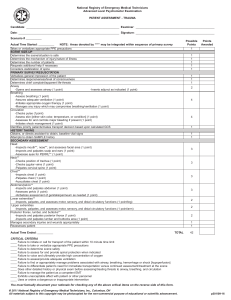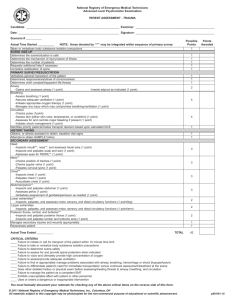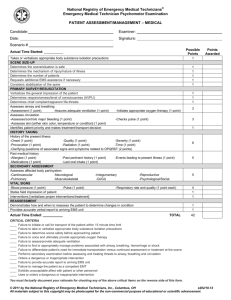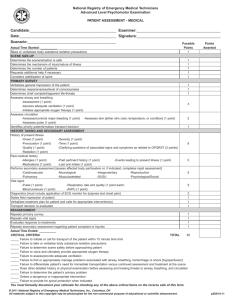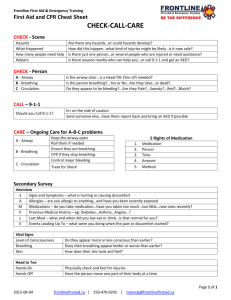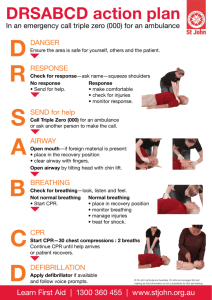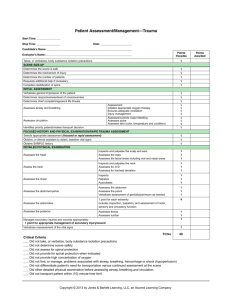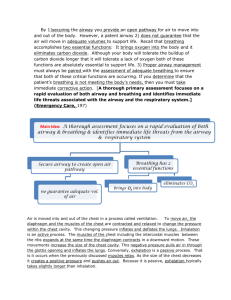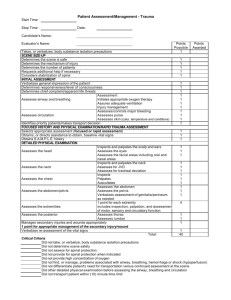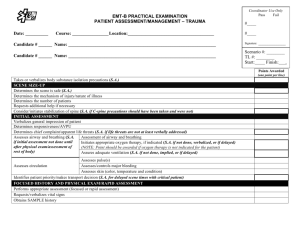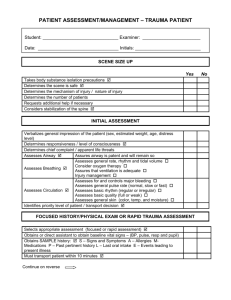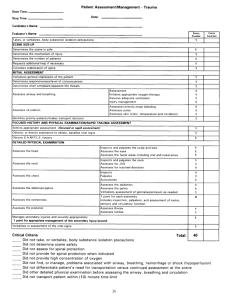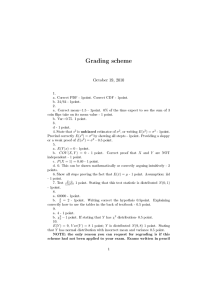Trauma Assessment - National Registry of Emergency Medical
advertisement
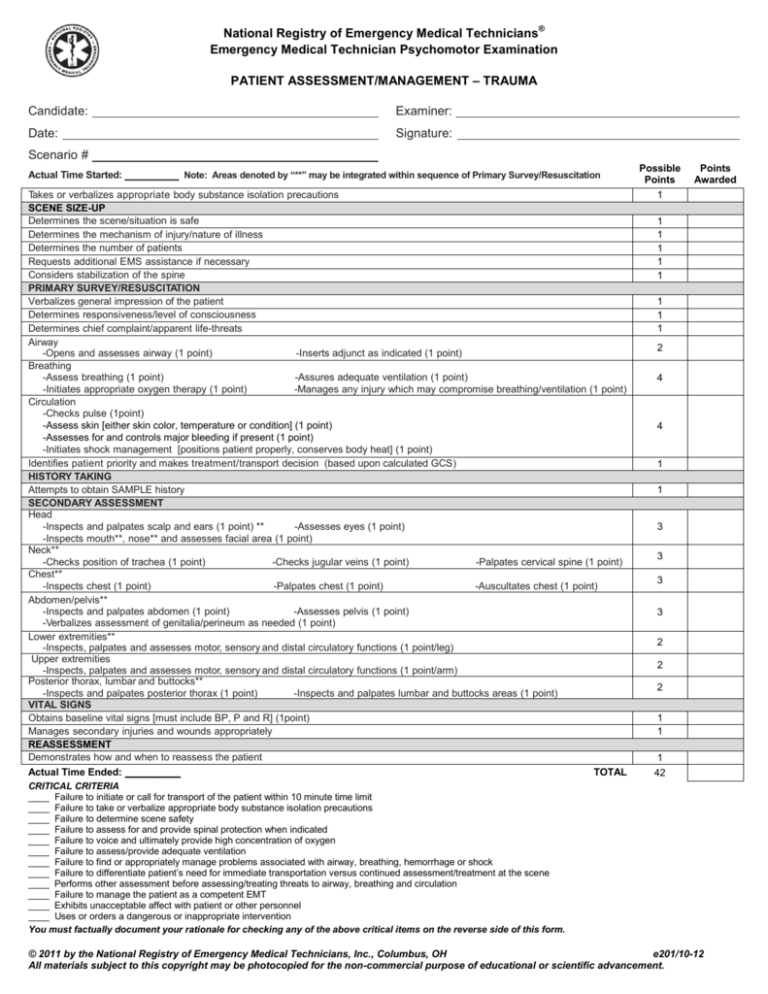
® National Registry of Emergency Medical Technicians Emergency Medical Technician Psychomotor Examination PATIENT ASSESSMENT/MANAGEMENT – TRAUMA Candidate: Examiner: Date: Signature: Scenario # Actual Time Started: __________ Note: Areas denoted by “**” may be integrated within sequence of Primary Survey/Resuscitation Takes or verbalizes appropriate body substance isolation precautions SCENE SIZE-UP Determines the scene/situation is safe Determines the mechanism of injury/nature of illness Determines the number of patients Requests additional EMS assistance if necessary Considers stabilization of the spine PRIMARY SURVEY/RESUSCITATION Verbalizes general impression of the patient Determines responsiveness/level of consciousness Determines chief complaint/apparent life-threats Airway -Opens and assesses airway (1 point) -Inserts adjunct as indicated (1 point) Breathing -Assess breathing (1 point) -Assures adequate ventilation (1 point) -Initiates appropriate oxygen therapy (1 point) -Manages any injury which may compromise breathing/ventilation (1 point) Circulation -Checks pulse (1point) -Assess skin [either skin color, temperature or condition] (1 point) -Assesses for and controls major bleeding if present (1 point) -Initiates shock management [positions patient properly, conserves body heat] (1 point) Identifies patient priority and makes treatment/transport decision (based upon calculated GCS) HISTORY TAKING Attempts to obtain SAMPLE history SECONDARY ASSESSMENT Head -Inspects and palpates scalp and ears (1 point) ** -Assesses eyes (1 point) -Inspects mouth**, nose** and assesses facial area (1 point) - (1 point) Neck** -Checks position of trachea (1 point) -Checks jugular veins (1 point) -Palpates cervical spine (1 point) Chest** -Inspects chest (1 point) -Palpates chest (1 point) -Auscultates chest (1 point) Abdomen/pelvis** -Inspects and palpates abdomen (1 point) -Assesses pelvis (1 point) -Verbalizes assessment of genitalia/perineum as needed (1 point) Lower extremities** -Inspects, palpates and assesses motor, sensory and distal circulatory functions (1 point/leg) Upper extremities -Inspects, palpates and assesses motor, sensory and distal circulatory functions (1 point/arm) Posterior thorax, lumbar and buttocks** -Inspects and palpates posterior thorax (1 point) -Inspects and palpates lumbar and buttocks areas (1 point) VITAL SIGNS Obtains baseline vital signs [must include BP, P and R] (1point) Manages secondary injuries and wounds appropriately REASSESSMENT Demonstrates how and when to reassess the patient Actual Time Ended: __________ TOTAL Possible Points 1 Points Awarded 1 1 1 1 1 1 1 1 2 4 4 1 1 3 3 3 3 2 2 2 1 1 1 42 CRITICAL CRITERIA ____ Failure to initiate or call for transport of the patient within 10 minute time limit ____ Failure to take or verbalize appropriate body substance isolation precautions ____ Failure to determine scene safety ____ Failure to assess for and provide spinal protection when indicated ____ Failure to voice and ultimately provide high concentration of oxygen ____ Failure to assess/provide adequate ventilation ____ Failure to find or appropriately manage problems associated with airway, breathing, hemorrhage or shock ____ Failure to differentiate patient’s need for immediate transportation versus continued assessment/treatment at the scene ____ Performs other assessment before assessing/treating threats to airway, breathing and circulation ____ Failure to manage the patient as a competent EMT ____ Exhibits unacceptable affect with patient or other personnel ____ Uses or orders a dangerous or inappropriate intervention You must factually document your rationale for checking any of the above critical items on the reverse side of this form. © 2011 by the National Registry of Emergency Medical Technicians, Inc., Columbus, OH e201/10-12 All materials subject to this copyright may be photocopied for the non-commercial purpose of educational or scientific advancement.
